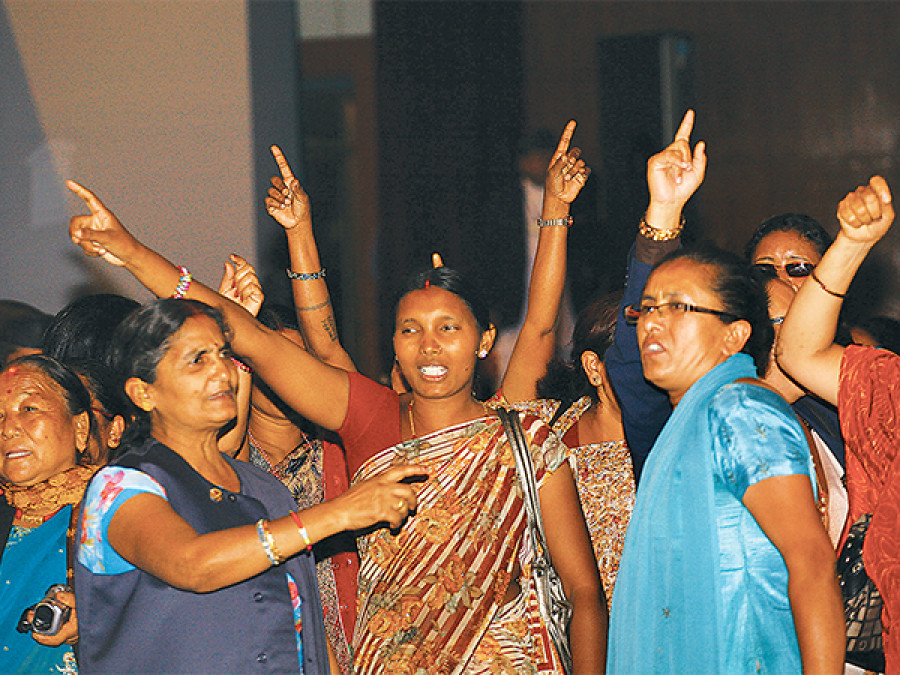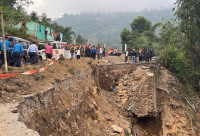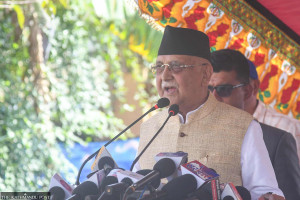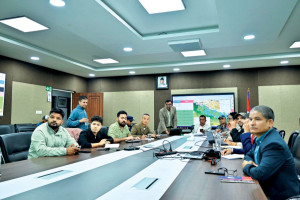Opinion
Power on paper
Women should be made part of all decision-making bodies to uproot patriarchy
Sharmila Thapa
Nepali women have meaningfully participated in different political movements throughout history. As far back as 1814, they fought with the British and their cannon using knives and stones at Nalapani.They also played an important role to establish multiparty democracy and to end the Rana Regime.
In the first general election held in 1958, Dwarika Devi Thakurani and Kamal Rana won two seats. But in the period between 1960 and 1990, an autocratic Panchyat regime put a sudden stop to all women’s organisations and their activities. However, they remained politically active. Women have also made significant political contributions in the period between 1990 and 2006 which included the decade-long Maoist’s armed struggle and the subsequent end of war and declaration of a federal democratic republic. The Janaandolan I and II have provided further impetus to women’s agendas and placed them at the forefront of political agendas. This has helped to increase the overall women’s percentage in national parliament.The presence of women in the Constituent Assembly (CA) is one of the best gains of women in politics. But they are yet to hold key decision making positions.
Back and forth
The Interim Constitution 2007 and Election Act have a special provision of providing a substantive quota for women, which contributed to achieving 33 percent representation of women in the first CA and also various state structures. But this constitutional provision has not been implemented by major political parties yet. Male-dominated political parties and the government are yet to accept women as political leaders and decision makers.While the Nepali Congress (NC) and CPN-UML seem to be somewhat serious about women’s participation in politics the UCPN (Maoist) that prominently raised its voice for women’s rights, does not have women in top party positions. Political parties have, thus, largely failed to promote women in leadership positions.
In the first CA, 197 of its 601 members were women. For the first time, the Nepali constitution has ensured 33 percent representation of women in national parliament. But unfortunately the second CA, formed after the November 2013 elections, failed to retain the 33 percent presence of women in parliament. In the current CA, there are only 175 women members. This clearly shows that political parties have totally ignored the constitutional provision and their own party manifestos.
Women’s representation also remains woefully low in decision-making bodies. Even as many women seem to be in politics there is an absolute dearth of women in decision- and policy-making bodies. This is a serious concern for women’s empowerment.More so as other countries have already changed their perspective toward women with regards to electing/nominating women as the head of the state/government or other respectable posts.
Just on paper
We all know that women’s participation is essential for complete and stable development. If so, why are women not given an opportunity to govern the state? More importantly, why are womennot at the negotiation table and actively involved in decision- and policy-making processes? On putting this question to some leaders, I got the answer: “They do not have the capacity to give the right decision, they cannot devote full time to politics and do not have the capacity to be elected as a top leader.”
I do not agree with this line of reasoning as the contribution made by women in the first CA, regardless of their background, qualification and experiences are there for all to see. All women need are opportunities.
If there is a constitutional provision to ensure 33 percent representation of women in national decision- making bodies, then there must be the involvement of 33 percent women in each and everynegotiation tabletoo.Major political parties must also be held accountable for promising one thing in their manifesto and not adhering to their own promises. Likewise, there is a need to monitor progress and adherence to multiple conventions and treaties signed by Nepal on the issues of women’s equal rights which are only limited to paper.
At the table
Every day, we see or hear of meetings between major political parties on different issues. In most of such meetings, there is a conspicuous absence of female members. Women are just limited to welcoming guests or as helpers but are not seen on the negotiation table or taking any decision on national development.Despite the reduced presence in the CA, there is no lack of women in Parliament. Some of them could have been involved in the various committees’ meetings. But this is yet to happen. Even women-related legislative drafts are signed by male members. All of it portrays women as incapable of making policies. But it is not true. Women are just barred from being directly involved in negotiations and signing of different agreements between two or more parties.
Abiding by the constitution and various laws that speak of equality between the sexes, women must be represented in every organ of the state. Women must beinvolved in negotiations so that they can raise the unheard voice of women at the highest government level. They must be involved as policy makers and decision takers.For this, a legal provision should be adopted that ensures the compulsory involvement of 50 percent women at the negotiating table.
Women’s equal involvement at all decision making bodies is necessary to uproot patriarchy. Political parties and media should build the capacity of women to take part in politics. In addition to capacity building, it is equally necessary to advocate and lobby for women’s empowerment.
Thapa is a recent graduate from the Central Department of Political Science, Tribhuvan University




 15.12°C Kathmandu
15.12°C Kathmandu










